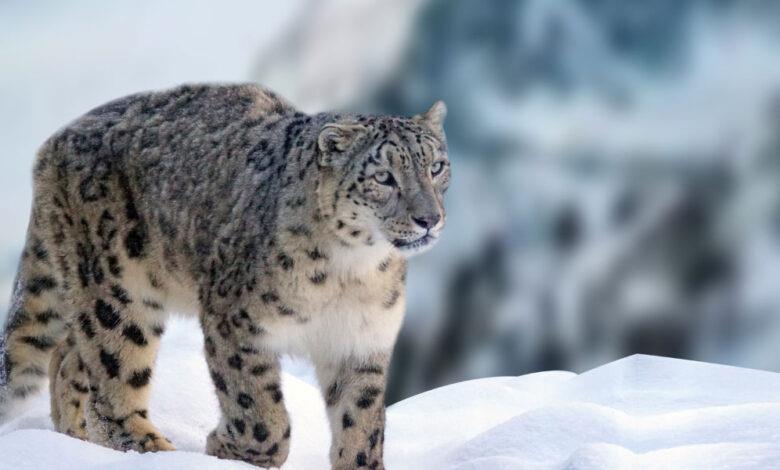
Snow Leopard Population Declines In Pakistan Due To Human Conflict And Climate Change
In Pakistan, the snow leopard population has dwindled due to the intersecting challenges of human conflict and climate change . According to Haider Raza, the Director North of the World Wide Fund for Nature (WWF) Pakistan, the global population of snow leopards stands at only 6,000 to 6,500, with a mere 300 to 400 residing in Pakistan. Alarmingly, just 25 percent of their habitats enjoy protection worldwide.
Raza underlines that expanding human activities and habitat loss have severely disrupted the snow leopard's movements, especially in lowland regions where it hunts. Human activities encroaching on protected wildlife areas have disturbed the snow leopard's natural habitats.
It's important to note that Pakistan is among the 12 countries that host these elusive cats, with 80% of the population residing in Gilgit-Baltistan.
Dr. Hussain Ali, a senior program manager at the Snow Leopard Foundation, echoes the concerns about declining snow leopard numbers. His organization is actively involved in safeguarding snow leopards in Gilgit-Baltistan. In select Gilgit-Baltistan villages, the Snow Leopard Foundation has introduced livestock insurance policies to ensure the well-being of these majestic creatures and the communities that rely on them.
Dr. Ali estimates the snow leopard population in Pakistan to range from 150 to 200, though the precise number remains uncertain.
Also Read: All-Pakistan CNG Association Protests Gas Price Hike, Closes Stations
It's worth noting that since the construction of the Karakoram Highway in the 1970s, Gilgit-Baltistan has witnessed rapid infrastructure development. Snow leopards, when they attack livestock for sustenance, often face retaliation from owners who aim to protect their animals, making it one of the most significant threats to the snow leopard's survival in Gilgit-Baltistan.
Dr. Ali laments the absence of a proper mechanism to mitigate human conflicts but believes that incentivizing non-retaliation is a viable approach.
Experts point out that when snow leopards struggle to find prey, they may attack livestock. In response, livestock owners often resort to shooting or poisoning the leopards to safeguard their animals. The poisoning method typically involves lacing the carcass of a deceased animal left out in the open. This practice is commonplace in remote areas of Gilgit-Baltistan to prevent snow leopard attacks on livestock.
Notably, snow leopards once inhabited Swat and Kohistan in Khyber Pakhtunkhwa but have since migrated to the mountains of Gilgit-Baltistan, Chitral, and Azad Jammu and Kashmir, particularly in the Karakoram, Himalayas, Hindu Kush, and Pamir mountain ranges. Climate change has drastically reduced their snow-covered habitats.
Environmentalists, such as Dr. Saeed Abbas, emphasize that snow leopards face numerous challenges, including conflicts with humans, habitat loss due to climate change, habitat degradation due to human activities, and the poaching of their teeth for trade, including the heartbreaking hunting of snow leopards for their bones.
Experts confirm a noticeable decline in snow leopard populations across Gilgit-Baltistan, with locals reporting fewer sightings of these elusive creatures, even in high-altitude regions where they were once commonly observed.

Legal Disclaimer:
MENAFN provides the
information “as is” without warranty of any kind. We do not accept
any responsibility or liability for the accuracy, content, images,
videos, licenses, completeness, legality, or reliability of the information
contained in this article. If you have any complaints or copyright
issues related to this article, kindly contact the provider above.


















Comments
No comment